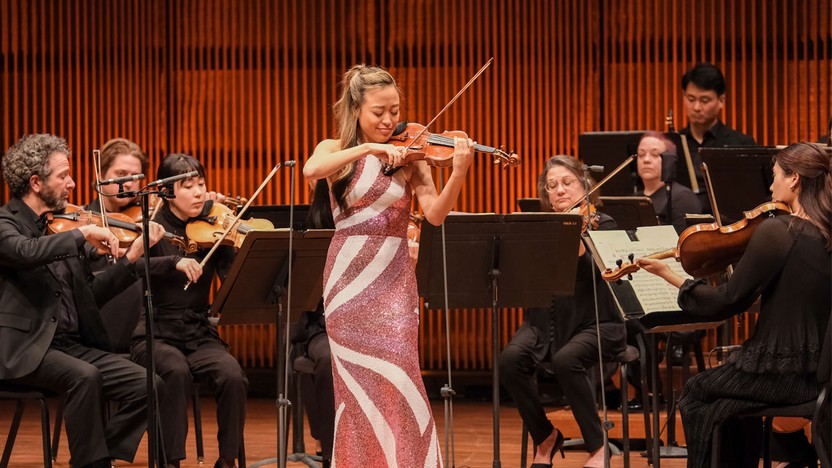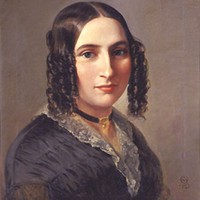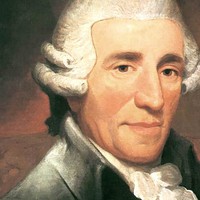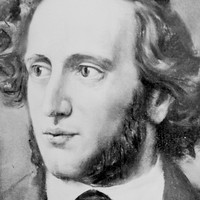Eunice Kim Plays Mendelssohn’s Violin Concerto



(Duration: 10 min)
When Felix Mendelssohn went abroad with his father to pursue a successful career as a performer and composer, his equally prodigious sister Fanny was left at home. Although the siblings had received the same training in all aspects of music from prestigious teachers up until age 16, Fanny Mendelssohn was confined to a mostly domestic musical life. When she became a wife and mother, she adhered (not without objection) to the expectations of her family and culture. But during a year-long trip to Italy with her husband and advocate, Wilhelm Hensel, Fanny was able to finally receive public admiration for her musicianship, particularly from the composer Charles Gounod, and the trip brought both confidence in her ability and creative energy back into her work.
She described Das Jahr, her piano work with a character piece for each month of the year plus postlude, as a "second diary" from her memorable journey. Johann Sebastian Bach’s chorales play a pivotal role in this music, here in the month of "March" (the Lutheran Easter chorale, Christ ist erstanden) and the "Postlude" (the New Year's chorale, Das alte Jahr vergangen ist, plus a reference to the opening line of St. Matthew Passion), as if her experience in Italy strengthened her identity as a Lutheran and champion of the German musical tradition. In "October", the festive music implies horn calls, and she inscribes in the music a poem, "In the forest, the green forest, There is a merry sound."
Given to her husband as a surprise Christmas present, Das Jahr would have surely entertained Hensel's family and guests and given her personal enjoyment as a souvenir from her trip to Italy. But though Hensel was discouraged in her day from writing for larger instrumental forces, I hope to honor the creativity and skill of Hensel in this arrangement, as if Das Jahr were originally written for winds.
James Ferree ©2023

(Duration: 27 min)
After Franz Joseph Haydn’s longtime patron Prince Nikolaus Esterházy died in 1790 and his successor disbanded the court orchestra, Haydn was left with a reduced salary and more freedom than he had enjoyed in decades. Seizing the opportunity, a German impresario active in London enticed Haydn to England with a generous contract for the 1791.92 season. Haydn’s London residency was a tremendous success, and he arranged a return engagement as soon as he could.
Haydn prepared the Symphony No. 99 during the interval between his London visits, when he attended to some Esterházy business in Vienna and also taught a few lessons to a young Ludwig van Beethoven. Just days after Haydn’s return to England, a concert featuring the premiere of the Symphony No. 99 confirmed his sterling reputation, as demonstrated by a review published in The Morning Chronicle: “The incomparable Haydn produced an overture [symphony] of which it is impossible to speak in common terms. It is one of the grandest efforts of art that we ever witnessed. It abounds with ideas, as new in music as they are grand and impressive; it rouses and affects every emotion of the soul.”
Symphony No. 99 features all the hallmarks that made Haydn’s London symphonies the gold standard for composers in his wake, most especially Ludwig van Beethoven. In the first movement, a slow introduction sets the stage, and the inclusion of clarinets adds a robust tone to a woodwind section that is granted more independence than in earlier symphonies. The Adagio is light and graceful, while the Minuet (an addition to the symphonic form that Haydn helped standardize) has a bit of a rustic character borrowed from the Ländler folk dance of Austria. The lively finale demonstrates Haydn’s verve and wit, starting with one of his favorite tricks: The orchestra restrains itself to a quiet dynamic for a long opening stretch, until the first loud arrival lands with maximal impact.
Aaron Grad ©2023

(Duration: 28 min)
Please note: movements performed without pause.
Felix Mendelssohn, the grandson of the great Jewish philosopher Moses Mendelssohn and the son of a prominent banker, was afforded every opportunity to develop his considerable musical talents. As a teenager in Berlin, when he wasn’t composing or mounting performances in his family’s private theater, he gathered to play chamber music with other talented youngsters, including Ferdinand David, a virtuoso violinist one year his junior. The two budding stars remained lifelong friends and collaborators.
When Mendelssohn became Music Director of the Leipzig Gewandhaus Orchestra in 1835, he invited David to join the orchestra as concertmaster. “I’d like to write a violin concerto for you next winter,” Mendelssohn went on to suggest in 1838. “One in E-minor sticks in my head, the beginning of which will not leave me in peace.”
Mendelssohn waited until the summer of 1844 to flesh out the concerto, a process that involved extensive correspondence with David about advanced violin technique. This impeccable concerto turned out to be the last orchestral score that Mendelssohn completed; two years after its 1845 premiere in Leipzig, he died following a series of strokes. Brass and timpani herald the arrival of the finale in the sunny home key of E-major. As a contrast to the flirty main theme, a regal secondary theme injects new grandeur and gravitas. It is fitting that this last big tune reworks the rhythms and intervals of the violin’s initial melody from the opening movement, such that an idea that first appeared in the concerto as a lonely question returns transformed into a communal affirmation.
Aaron Grad ©2023
Get driving directions and find nearby parking.
Find dining options close to the venue.
View seating charts to find out where you'll be seating.
Get driving directions and find nearby parking.
Find dining options close to the venue.
View seating charts to find out where you'll be seating.
